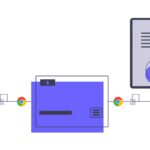Creating an artificial intelligence service in-house can cost your business quite a lot of money. It is also a fact that not all businesses can afford this type of expenditure. The solution to this problem is to totally outsource your artificial intelligence requirements and let someone else take the pain for you albeit for certain payments. Instead of spending thousands of dollars on an in-house product, it is cheaper and better, both for large organizations and small businesses, to use cloud computing services.



